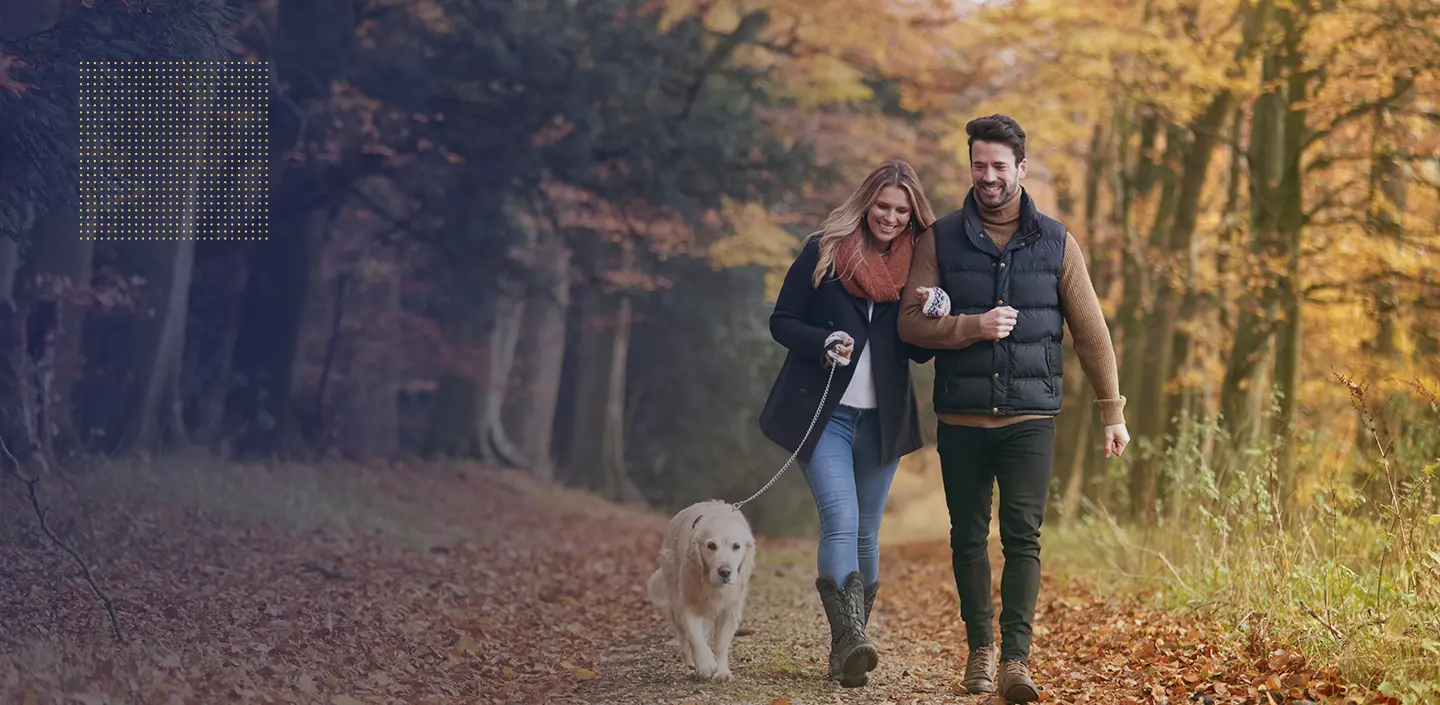
How do you stay fit and active? Is your exercise plan as helpful as it could be, or are you just spinning your wheels? All exercises are good, but certain exercises are actually better for longevity than others. If you want to live a long and healthy life, you want to focus on activities that help you build strength, improve your cardiovascular health, and help with your mobility and stability. We’re here to talk about a few of the best exercises for longevity that will do just that.
Best Exercises for Longevity and Durability
Let’s delve deeper into the top exercises that may not only benefit your physical and mental health but also improve longevity and durability.
1. Walking – One of the Best Exercises for Longevity
You may be surprised to see walking on the list of best exercises for longevity, but it’s actually one of the best things you can do for your body. It’s low-impact, you can do it anywhere, and it’s doable for the vast majority of people.
While some people say that you need to walk 10,000 steps per day for peak health, this is an arbitrary number. It’s a good goal to have, but the actual “best” number of steps you should take per day will vary depending on your body and your goals. At the end of the day, if you’re walking at all, you’re doing a good job.
Ideally, if the weather is nice, you’ll walk outside. This way, you can also take advantage of the physical and mental health benefits of sunlight and fresh air. If that’s not possible, walking on a treadmill or walking pad is almost as good, and you can do it while working, watching television, or reading a book.
Even the CDC recommends walking as an important part of your weekly routine. It may not be intense, but it is still beneficial.
2. Biking
Biking is another fantastic longevity exercise, and it’s another one you can either enjoy outdoors (on a traditional bike) or inside on a stationary bike. While it’s always ideal to spend time outside so you can reap the benefits of sunlight and fresh air, biking indoors is far better than not biking at all, and for many people, stationary bikes are more accessible.
Biking is fantastic for your cardiovascular health. It can also be fantastic for your legs. You’ll find your leg muscles getting firmer and stronger after you spend some time biking.
Biking is good for people who struggle with joint pain as well. It’s a high-cardio exercise (if you choose to bike at a quicker pace) that doesn’t put too much pressure on the knees like running or jogging does. If you’re riding a bike outside, make sure to wear a helmet so you stay safe.
3. Squats
Strength training is fantastic for your body. Not only will it help you build muscle, so you’re stronger and more capable, but it can also improve your balance and improve your bone health. When you increase your muscle mass, you’ll also improve your metabolism. The benefits of strength training are almost impossible to count. Everyone should incorporate strength training into their weekly exercise routines.
A basic squat, while simple, is one of the best strength exercises for longevity. Whether you’re doing a simple squat without any added weight or you’re lifting heavy, you’re improving your physical strength.
Starting with a body-weight squat is best for most people, but if you can, try adding weight. You can hold books or jars, hold a heavy backpack on your back, or use actual dumbbells or a barbell.
Adding weight to your squats won’t make you “bulky” unless you’re training specifically for mass (in most cases), but it will make you strong and capable. Just make sure you’re only scaling up your workouts with your own abilities. Don’t overdo it or you will risk injury.

4. Swimming
It’s well known that swimming is one of the best exercises for longevity. It’s a full-body workout, and it’s good for your cardiovascular health. It also puts zero pressure on any of your joints.
When you move your body through water, it’s more challenging than moving it through the air (but swimming may not feel particularly challenging while you’re doing it). If you’re swimming underwater, you’re also training your lungs to become more efficient. This is fantastic for your long-term respiratory and cardiovascular health.
Swimming doesn’t have to be intense to be effective. You can do “aquarobics,” tread water, or swim slow and relaxing laps around the pool and you’ll still be doing something good for your body. One of the top benefits of swimming is that it doesn’t feel as challenging as it is, so you can have a lot of fun while still getting a fantastic workout.
5. Loaded Carries
Loaded carries allow you to exercise like your ancestors did. There are a lot of different exercises that technically qualify as loaded carries, so they all fit into this category. Whether you’re carrying a heavy backpack around, doing walking goblet squats with a heavy dumbbell, or even just bringing something heavy with you while you go on a walk, it counts!
This is a great way to build functional strength and stability. That means that this exercise won’t just help you while you’re working out in the gym. It will make you stronger and more capable in your day-to-day life.
6. Sit to Stand
This may seem simple, but it can actually be incredibly beneficial. It’s one of the best longevity exercises, and you don’t need any special equipment to do it. You don’t even need to have a high level of fitness to do it effectively.
Sit on a low chair and stand up. Repeat this until you start to feel tired. This is especially useful for older adults who are struggling to stand up from a seated position. The more you work at it, the better you will be.
If you want to add an extra challenge, start from a lower seat or hold something heavy when you stand up. This will increase the intensity, and you may even feel a slight burn (in a good way, of course).
7. Deadlifts
Deadlifts are fantastic exercises for longevity as long as you do them with good form. If you’re new to deadlifts, we recommend watching a few videos or having a trainer explain the movement to you. This will help you protect your back and target the correct muscles during the exercise. Some deadlifts target the glutes while others target the thighs, so by choosing the correct type, you’ll be able to (somewhat, at least) control your results.
Deadlifts are fantastic for the legs, but they’re also good for your shoulders, your core, and your back (as long as you’re doing them safely). They’re full-body exercises. You can do deadlifts with dumbbells or a barbell, or even a trap bar if you have one accessible.

8. Yoga
Yoga isn’t one specific exercise per se, but rather, a collection of movements and positions. Yoga isn’t a high-intensity exercise, but it does require a fair amount of strength, flexibility, and mobility. Certain types of yoga, like vinyasa yoga, can be a cardio challenge as well.
There are yoga routines for people with mobility challenges, and it’s easy on the joints, making this yet another accessible longevity exercise. Aside from the obvious physical benefits, it also has mental benefits. Yoga encourages mindfulness and a close focus on your breath. You can improve your mental health through consistent yoga while you also become stronger and more flexible.
9. Clean and Press
Clean and presses (or any similar exercise variations) are a full-body exercise. You start with a dumbbell (for a single-side variation) or a barbell on the ground. You grab it, and while getting into a squat position, you bring it up to around where your shoulders are. Then, push out of the squat and raise the weight overhead, using your legs to push rather than your arms.
As long as you use proper form, this exercise is fantastic for stability and strength, and while your legs are doing most of the work, it’s also excellent for your core and shoulders.
You may also like: the complete guide nutrition for longevity
Really – Any Exercise You Enjoy
At the end of the day, the best exercise for longevity is any exercise you enjoy. It’s the exercise you can keep doing day after day, week after week. Of course, that exercise may change, and you may find yourself cycling through a few different exercises when you get bored. That’s okay.
As long as you’re moving and balancing cardio and strength training (with a bit of flexibility work in there as well), you’re doing something good for your body. The technical “best” exercise won’t be helpful to you if you don’t have the drive to keep up with it.
Conclusion
So how do you like to stay active? If you’re still working on building a good exercise routine for longevity, consider adding in a few of our favorite exercises. Get stronger and healthier so you can live a long, happy, and healthy life.
If you’re always looking for ways to stay healthy and youthful, don’t forget to check out our science-backed longevity products.
References:
Exercise capacity and mortality among men referred for exercise testing.
Physiological adaptations to low-volume, high-intensity interval training in health and disease.
The health benefits of yoga and exercise: a review of comparison studies.
Health benefits of physical activity: the evidence.
Resistance Training and Mortality Risk: A Systematic Review and Meta-Analysis.
Resistance Exercise Reverses Aging in Human Skeletal Muscle.

premium supplements Liposomal Technology made in EU Third party lab tested
Experience life to its fullest because you deserve the best! Try Purovitalis supplements!








